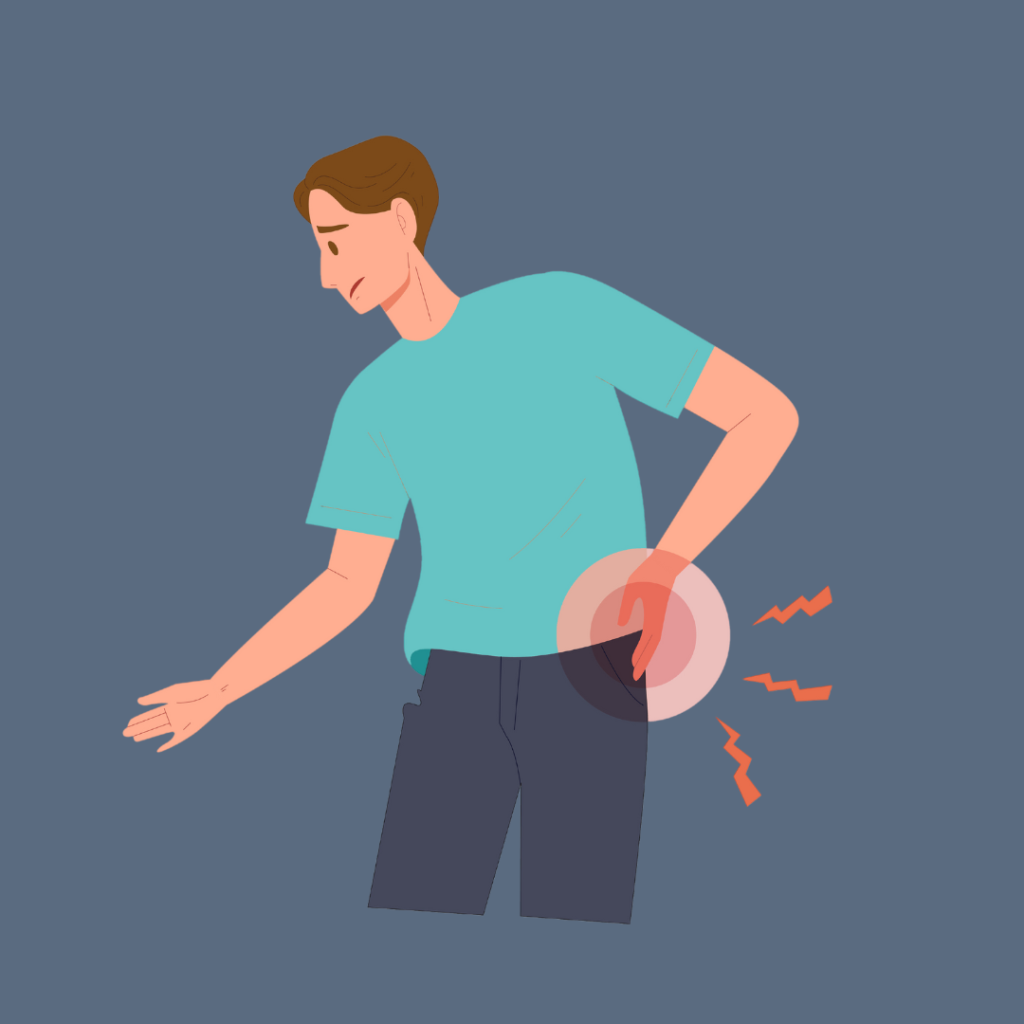
Sciatica can literally be a pain in the @$$
According to the Cleveland Clinic, about 40% of people in the U.S. experience some form of sciatica during their lifetime. Here is some information on Sciatica and what you can do to address pain or prevent future injury:
Definition: Sciatica refers to pain, weakness, numbness or tingling in the leg which is due to injury or compression of the sciatic nerve.
Causes: The sciatic nerve is the longest, largest nerve in your body. It’s a mixed nerve, meaning it has both motor (movement) and sensory (sensation) fibers that originate from 5 different nerve roots from the lumbar spine (lower back). These nerve groups come together deep within the buttock to form a single large, thick sciatic nerve. A problem with the sciatic nerve may occur at the lumbar spine level OR may occur along the course of the nerve itself. Bone spurs, herniated discs, spinal stenosis, or degenerative disc disease at the lumbar spine level could be responsible for added pressure and injury to the sciatic nerve. Piriformis syndrome (tightness of the piriformis muscle within the buttock) could also be responsible for added pressure or compression of the sciatic nerve.
Symptoms: Because the Sciatic nerve is a mixed nerve, symptoms can vary. Many individuals experience symptoms including aching pain, burning pain, numbness, tingling, and/or weakness of the leg. These symptoms are usually felt on one side of the body and can occur anywhere from the buttock region down to the calf (back of the leg) and/or sole of the foot.
Diagnosis: Diagnosis can occur from both a subjective examination (gathering of information) and a physical exam which may show weakness in the involved leg, difficulty walking on toes, difficulty/pain with bending forward or backward, loss of sensation, pain with lifting the leg straight up when lying on your back, etc. All of these exams can be performed in person OR virtually. Tests (MRI’s/Xrays) are often not needed unless the pain is severe or long-lasting.
Treatment: It depends! Treatment should be based on both the subjective and physical findings. The initial goal should be to decrease pain and increase mobility by finding exercises or movements that decrease irritation or compression of the nerve. Other types of conservative treatment can include medication & injections, obviously through the guidance of a medical professional. Surgery can be an option but is often not recommended unless symptoms are severe and chronic.
Prevention: Some causes of sciatica are preventable! Maintaining good mobility and core/back strength is a good way to help prevent injury. Quit (or don’t even start) using tobacco products and maintaining a healthy weight will reduce your risk of injury. Stay active and be smart about what you lift & how you lift.
Are you experiencing symptoms of sciatica OR want to learn more on how to prevent these injuries from happening in the future? Click the button below to book an appointment with one of our physical Therapists!
Mental Health
Marketplace
Nutrition
Physical Therapy
Rewards
HUSK Pro
Company
About
Contact
Press
Blog

